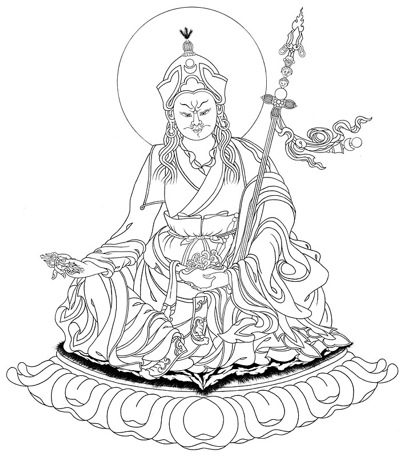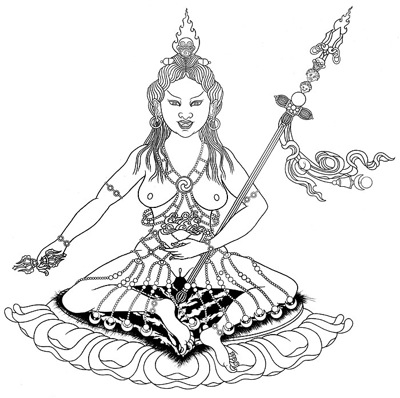
Padmasambhava
I have been practicing Buddhist meditation, more or less half-assedly, for upwards of twenty-five years. Recently it occurred to me that this is one percent of the history of Buddhism, since Shakyamuni Buddha is supposed to have lived about 2500 years ago.
That was a shock. Buddhism seems impossibly ancient, and for my little piece of it to have been a full percent seems far too much. But if we are lucky, and last for what counts now as a normal life-span, we will see more than three percent of the history of Buddha-Dharma. That is one thirtieth.
In the first page of this section, I suggested that we are responsible to Buddhism. Here I would like to take a deeper cut. We are not only responsible to Buddhism; we are responsible for Buddhism. We are responsible for the portion of Buddhism that occurs during our lives—three percent of it. And we are responsible for a particularly critical three percent, in which Buddhism faces both extraordinary dangers and extraordinary opportunities. Buddhism could easily become effectively extinct within this century. But Buddhism also has radical transformational potential for Western society.
Buddhism should never be invented or deliberately added to. However, it also cannot survive if it is merely mechanically reproduced according to a recipe. Our job is not to alter Buddhism to suit our circumstances, but to work to make it relevant to our lives. This is a creative improvisational dance in which Buddhism, we, and our world interact.
The essential teaching of Shakyamuni, of Padmasambhava, of Yeshé Tsogyel, is just as profound, shocking, relevant, and exciting as when they were alive.
We tend to think of Buddhism as something that happened long ago, far away. It has been passed down to us as an obscure holy relic that we are supposed to revere and study like a museum piece. But our fundamental responsibility is to live the view. That is the real meaning of refuge: to make the dusty teachings come alive—by seeing the world illuminated by Dharma, and acting on what we see.
Buddhism is us. It has always been us; it has always been seemingly ordinary people discovering its radical possibility and being transformed by it.
2500 years ago it was Shakyamuni, a confused Indian guy who discovered something useful by sitting under a tree; and his motley collection of followers. 1200 years ago, it was Padmasambhava, a ferocious Central Asian who put on his ang-ra one leg at a time, trying to pound some sense into the heads of a bunch of blood-thirsty barbarians; and his lover Yeshé Tsogyel.

Yeshé Tsogyel
It is useful also to see these pioneers as heroic demigods with shimmering bodies of light who performed miracles—but only because it is also useful to see ourselves as heroic demigods with shimmering bodies of light who can perform miracles. The message of Inner Tantra is that there is no essential difference between the yidams and ourselves. With hard work, open hearts, and lots of luck, we may be able to do what they did.
In our practice, we rely on Yeshé Tsogyel and Padmasambhava to show us dharmakaya and sambhogakaya; but they are relying on us to show nirmanakaya.
Let’s not let them down.
